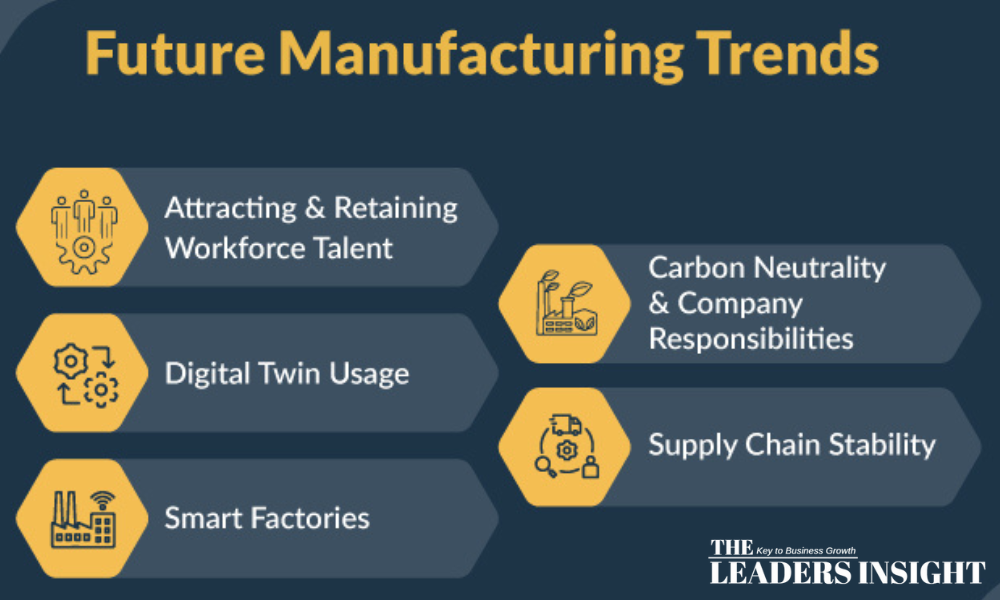The Future of Manufacturing in the USA: Trends and Innovations for 2024

As we step into 2024, the manufacturing industry in the USA is undergoing a significant transformation driven by technological advancements, evolving consumer demands, and a focus on sustainability. From automation and digitalization to supply chain resilience and innovative materials, the future of manufacturing promises to be both exciting and challenging. This article explores key trends shaping the manufacturing landscape in the USA and their implications for businesses and workers alike.
1. Automation and Robotics
Automation continues to be a dominant force in the manufacturing sector. In 2024, manufacturers are increasingly adopting robotics and automated systems to enhance productivity, reduce labor costs, and improve precision. According to the Robotic Industries Association (RIA), the demand for industrial robots is expected to grow significantly, with a projected 20% increase in installations this year.
Collaborative robots (cobots) are becoming particularly popular, allowing human workers to safely interact and work alongside machines. This integration of robotics is enhancing efficiency while enabling workers to focus on more complex tasks that require human ingenuity.
2. Digital Transformation and Industry 4.0
The shift towards Industry 4.0 is revolutionizing manufacturing processes by integrating digital technologies such as the Internet of Things (IoT), big data analytics, and artificial intelligence (AI). In 2024, manufacturers are increasingly utilizing smart factories equipped with interconnected devices that collect and analyze data in real-time.
These technologies enable manufacturers to optimize production processes, reduce downtime, and enhance decision-making. For example, predictive maintenance powered by AI can help identify equipment issues before they lead to failures, resulting in significant cost savings and improved efficiency.
3. Sustainable Manufacturing Practices
As environmental concerns grow, sustainability has become a critical focus for manufacturers in 2024. Companies are adopting eco-friendly practices to reduce their carbon footprint, conserve resources, and meet regulatory requirements. This includes implementing circular economy principles, which emphasize recycling and reusing materials.
Many manufacturers are investing in renewable energy sources, such as solar and wind power, to power their facilities. Additionally, sustainable material sourcing and waste reduction strategies are becoming essential components of manufacturing operations. Consumers are increasingly favoring brands that prioritize sustainability, prompting companies to adapt their practices accordingly.
4. Supply Chain Resilience
The COVID-19 pandemic exposed vulnerabilities in global supply chains, prompting manufacturers to reassess their strategies. In 2024, building supply chain resilience is a top priority, with companies focusing on diversifying suppliers, increasing inventory levels, and adopting advanced technologies for better visibility.
Manufacturers are also investing in local sourcing and nearshoring to mitigate risks associated with overseas production. This shift not only reduces transportation costs and lead times but also supports domestic job growth and economic stability.
5. Customization and Additive Manufacturing
Consumer demand for personalized products is driving manufacturers to embrace customization and additive manufacturing (3D printing). In 2024, companies are increasingly using 3D printing technologies to produce bespoke items tailored to individual customer preferences.
Additive manufacturing allows for rapid prototyping and reduces waste compared to traditional manufacturing methods. As the technology matures, manufacturers are exploring new materials and applications, including bioprinting in healthcare and complex geometries in aerospace.
6. Workforce Development and Skills Training
As manufacturing becomes more technology-driven, the demand for skilled workers is rising. In 2024, manufacturers are investing in workforce development programs to equip employees with the necessary skills to thrive in a digital manufacturing environment.
Collaboration with educational institutions, vocational training programs, and online learning platforms is essential for bridging the skills gap. Upskilling and reskilling initiatives will help workers adapt to new technologies and ensure that manufacturers have access to a talented workforce.
7. Emphasis on Safety and Health Standards
Workplace safety remains a top priority for manufacturers in 2024. In light of the ongoing health concerns stemming from the pandemic, companies are implementing stringent safety protocols and investing in technologies that enhance worker safety.
Automation and robotics play a crucial role in minimizing human exposure to hazardous tasks. Additionally, manufacturers are leveraging wearable technologies to monitor worker health and safety in real-time, helping to create a safer working environment.
8. Data-Driven Decision Making
Data analytics is becoming an integral part of manufacturing operations in 2024. Companies are leveraging big data to gain insights into production efficiency, quality control, and customer preferences. This data-driven approach allows manufacturers to make informed decisions, optimize processes, and respond swiftly to market changes.
Manufacturers are utilizing advanced analytics tools to identify trends, forecast demand, and improve product quality. The ability to harness data effectively will be a key differentiator for manufacturers seeking a competitive edge in the market.
To stay updated on the latest developments in manufacturing and industry trends, consider following news sources such as Manufacturing.net or IndustryWeek. For expert insights on technology and innovation, visit The Leaders Insight.
